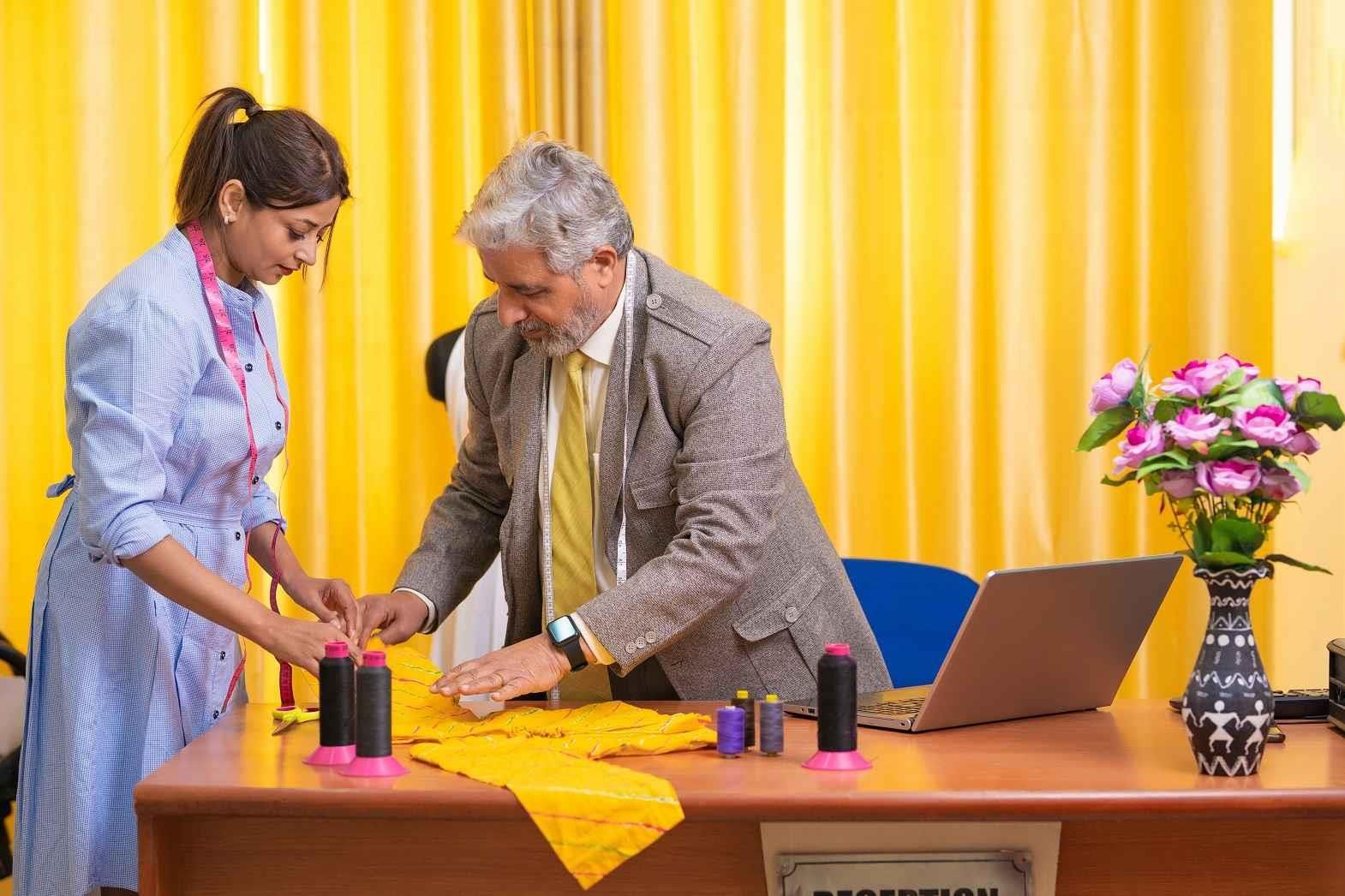The textile sector is a prominent actor in India’s economy, making substantial contributions to GDP, exports, and industrial production. Beyond the financial indicators, it impacts millions of lives both directly and indirectly by serving as a significant employment generator. Education plays a critical role in sustaining and enhancing this rapidly evolving industry.
To address the growing demand in both domestic and international markets, India has made tremendous advancements in the field of textile education. Nowadays, a wide range of programmes, encompassing textile engineering, fashion design, and allied subjects, are offered by numerous universities. These programmes range from diploma courses to undergraduate degrees. Students who complete the curriculum gain a solid foundation in polymer chemistry, fibre science, and textile chemical processing, and are thus prepared to take up a variety of roles in the sector.
The government has also launched programmes to improve textile education, recognising its importance in supporting the textile industry. The aim of offering paid internships to students pursuing degrees in textiles is to bridge the knowledge gap between academia and the industry by providing them with practical experience.
Challenges in Textile Education
Despite some encouraging developments, the textile education industry still confronts many obstacles that limit its potential for expansion:
-
Lack of Industry Awareness: One factor contributing to students’ lack of awareness is the scarcity of courses on the textile business. This makes it more difficult for them to choose a career.
-
Restrictive Education Pattern: Practical knowledge and hands-on experience are marginalised in a curriculum that primarily emphasises theory. This may make it more difficult to apply theoretical knowledge to practical textile applications.
-
Limited Research: Studies on practical textile enhancements are few in number. For the sector to thrive sustainably, the focus must be shifted from cost-cutting and productivity to creative innovation.
-
Urban Preference: Jobs in large cities are frequently preferred by students, while the textile sector is mostly concentrated in rural areas. This gap between urban and rural areas highlights the need for increased infrastructure and education on prospects in non-urban areas.
-
Lack of Specialisation Awareness: The vast variety of textile products makes it difficult for students to decide on a specialisation. By giving them the necessary knowledge, one can facilitate their decision-making and improve career alignment.
Challenges in the Textile Industry
A document called ‘Decadal Outlook for Textile Industry: Threads of Transformation for Textile Industry’ from the Confederation of Indian Industry (CII) and Primus Partners talks about the various problems the textile industry is facing:
-
The industry is not very organised, which makes it hard for everyone to work together effectively.
-
The training programmes for workers are too short to keep up with how fast the industry is changing.
-
The technology used in the industry is old, which makes it harder for the industry to compete.
-
Not enough people know about new areas in the industry that could help it grow, like technical textiles.
The report says that the industry needs to focus more on using better technology, doing more research and development, and testing product quality better.
Opportunities in the Textile Industry
Despite the difficulties, there are plenty of chances for the textile industry to grow:
-
Building a Skilled Workforce: Schools that teach textile skills are important for making sure there are enough skilled workers. This means teaching not only how to do the job but also understanding what customers want.
-
Working Together: When schools and textile companies work closely, students can learn more from real-world experiences. This helps them understand how things work outside of school and gives companies new ideas.
-
Attracting People: Schools need to make sure people know about the good things in the textile industry, like job opportunities and success stories. This makes more people want to work in the industry.
-
Learning Different Things: In the future, textile schools should teach a mix of subjects, like engineering and artificial intelligence. This makes sure students have all the skills they need for the changing industry.
-
Government Support: The government is also helping by starting programmes like PM MITRA, PLI, and SAMARTH. These programmes are meant to improve the textile industry, grow the economy, and create more jobs.
The Future Forward
Improving India’s textile education system is crucial for long-term growth and staying competitive globally. Here are some important steps to make this happen:
-
More Courses: We need to offer more courses about textiles so students know about all the different jobs they can do in the industry.
-
Balanced Learning: Students should learn both theory and practical skills. Doing hands-on projects helps them get ready for work.
-
Research and New Ideas: We should encourage people to come up with new ideas to make textiles better. Educational institutes and companies can work together on this.
-
Better Places to Learn: We need to build more training centres in rural areas where lots of textile work happens.
-
Help Choosing Careers: Academic institutions should give students advice about different jobs in textiles so they can pick the right one for them.
-
Better Training: The industry should offer good training programmes to help workers learn new skills and keep up with changes.
-
Working Together: Training institutes and companies should work closely to make sure students learn what they need for work. Students should also get chances to work at companies while they are still studying.
-
Technical Textiles: We need to tell people about new types of textiles, like ones that have special uses. Schools can teach about these too.
-
Skill Building: The government should help people learn new skills for textile jobs. They should focus on what companies need.
-
Checking What Works: We should keep an eye on how well our courses and programmes are doing. If things are not working, we can change them to make them better.
Conclusion
The reform of India’s textile education system is essential and presents an opportunity to steer the sector towards a creative and vibrant future. By addressing the challenges and seizing the opportunities, India can position itself as a leader in producing a skilled workforce for the textile industry. This will enhance the industry's global competitiveness and foster growth, while also empowering the next generation.











Comments